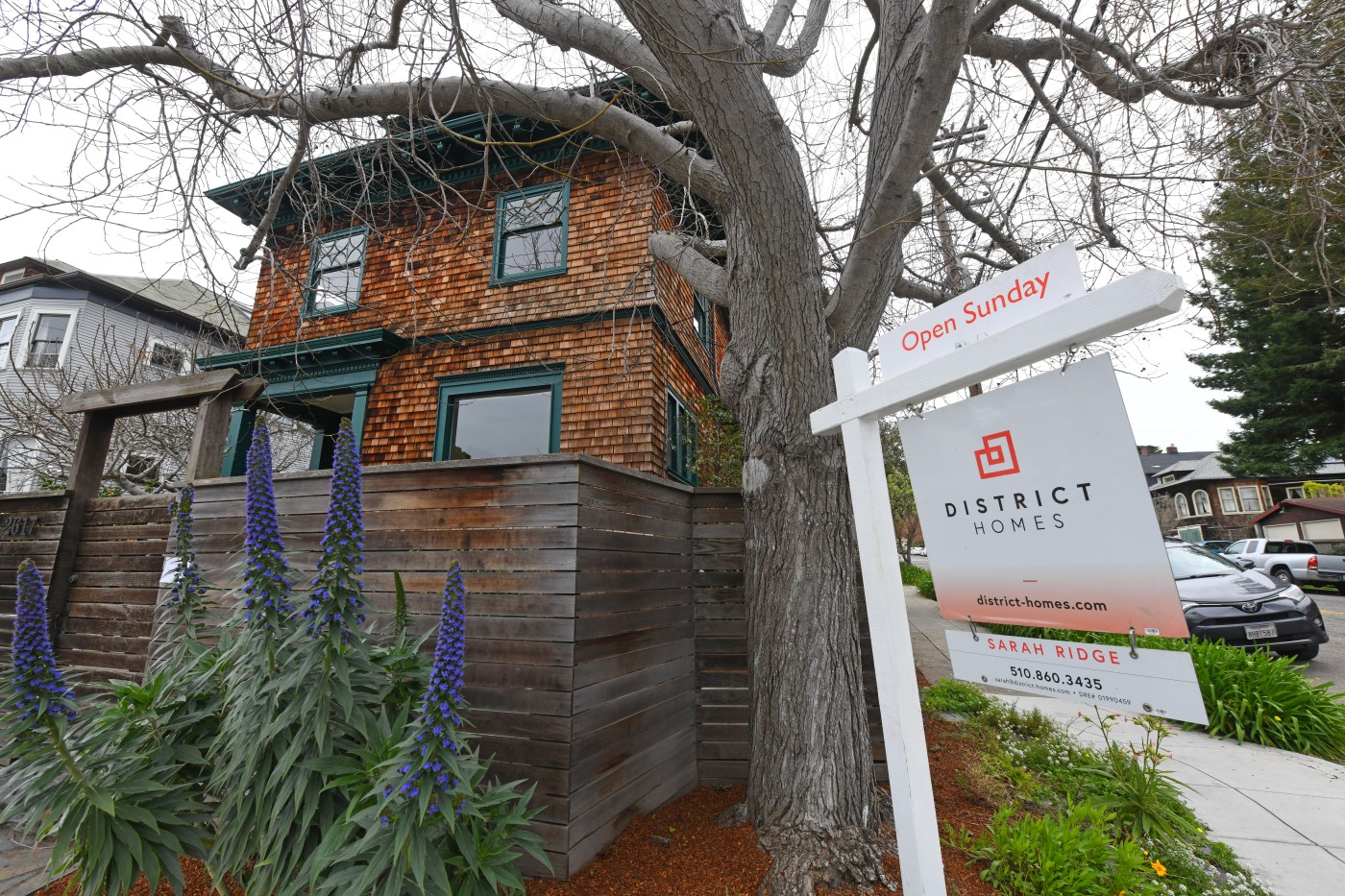
Roiled by persistently high interest rates and economic uncertainty amid President Donald Trump’s trade war, the Bay Area’s usually heated spring home buying season languished this year.
After three years of slow home sales, agents had hoped the market would pick up in 2025. While the Bay Area’s housing market is still much stronger than the rest of the country’s, sales here still aren’t meeting expectations. Sales of existing homes in the nine-county Bay Area in May fell 8.2% from the same period last year, according to new data from the California Association of Realtors.
Related Articles
Will California scale back its core environmental protection law to build more housing?
Homeless-related arrests, citations soared in these California cities after Supreme Court case
San Jose neighborhood residents blast massive Builder’s Remedy housing proposal
Gov. Newsom, Legislature tangle with construction unions over minimum wage
New-home sales drop by most since 2022 on poor affordability
“The spring market is usually pretty reliable,” said Allie Pembleton, a Berkeley-based agent with Keller Williams. “But this year, we didn’t get the momentum that we usually do.”
Agents say a number of buyers hit pause on their search in April, when Trump announced a bevy of tariffs on foreign goods. The president’s actions sent stocks swinging, creating uncertainty for buyers who had hoped to cash out their portfolios to help finance down payments.
“The demand and aggressiveness of buyers is way down,” said Rusty Paap, a San Jose-based agent with Intero Real Estate Services. “Even though the number of views online has been consistent with the beginning of the year, buyers’ willingness to pull the trigger and write offers has changed significantly.”
Meanwhile, inventory has continued to climb. As of May, the Bay Area had nearly three months of unsold inventory, a 53% jump from the same time last year. In Alameda and Contra Costa counties, inventory nearly doubled from last year.
With more choices on the market, sellers are seeing reduced competition for homes.
“They feel like, even if they don’t get one house, it’s OK, because another is coming,” Paap said.
That’s kept prices largely stable across the Bay Area, and in some cases, even led to small declines. The median sales price of single-family homes in the Bay Area was $1.4 million in May, down 3.8% from the same time last year. The median home price was $924,950 in Contra Costa County, $1.4 million in Alameda County, $1.8 million in San Francisco, and $2.2 million in both San Mateo and Santa Clara counties.
“With a bit less demand and a bit more supply, there’s not quite as much upward pressure on prices as we’ve seen up to this point,” said Jordan Levine, chief economist for the California Association of Realtors.
Interest rates are the other major reason for the slow sales. Since rates went up in 2022, agents have been telling homebuyers that they expect rates to fall. But it turns out that their optimism hasn’t matched reality: On Wednesday, the Federal Reserve announced it would leave rates unchanged, as officials wait to see how Trump’s policies impact the economy and inflation.
Because mortgage rates tend to track fluctuations in the Federal Reserve rate, that means borrowers are unlikely to see relief anytime soon, either. As of June 18, the average rate on a 30-year fixed-rate mortgage was 6.81%, according to housing giant Freddie Mac. Rates have hovered around that level since the beginning of the year.
The slowdown in sales comes as real estate brokerage Compass sued Zillow this week over its plan to ban private home listings.
With the ban, Zillow aims to end Compass’ practice of privately sharing some listings on Compass.com before they appear on large search portals. Zillow claims the policy creates a lack of transparency, hurting both buyers and sellers. Compass claims the ban, set to go into effect late this month, is anticompetitive and has asked a judge to halt it.
In the Bay Area, homes are still selling somewhat slower than earlier this year — the median time on market is 16 days, compared to 13 in February and March.
Sellers who might have been expecting the Bay Area’s typical bidding wars and prices way above listing may have to adjust to a reality in which they’re up against more competition.
“Sellers have been expecting the prices they got in February and March, but buyers were no longer willing to pay those,” Paap said. “Now it seems like sellers are recalibrating their expectations.”
Darcey Arena, an agent in San Jose, said that the increased choice on the market allows buyers to be pickier.
“As a seller, you can’t just put your house on the market these days and expect it to sell for over the asking price,” she said. “Buyers want to see that the seller took care of some of the work that needed to be done. They’re digging into inspections more than before. They want to see value in the home.”
For a savvy buyer, it could be a good time to strike while inventory is up and fewer buyers are on the market.
“Buyers can get some real opportunities,” Arena said. “If they play their cards right.”
Staff reporter Ethan Varian contributed to this story.